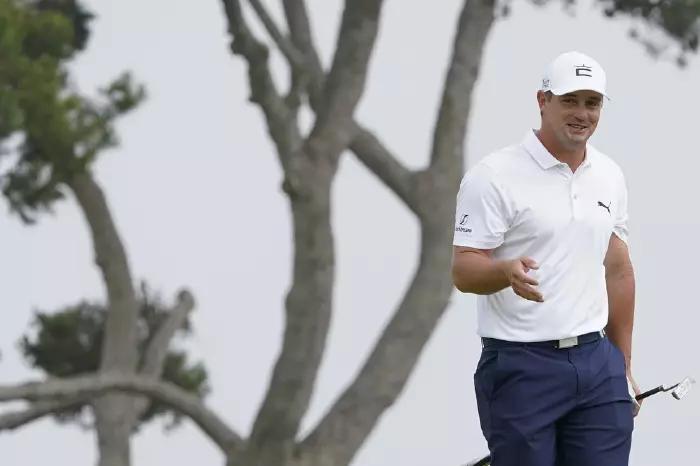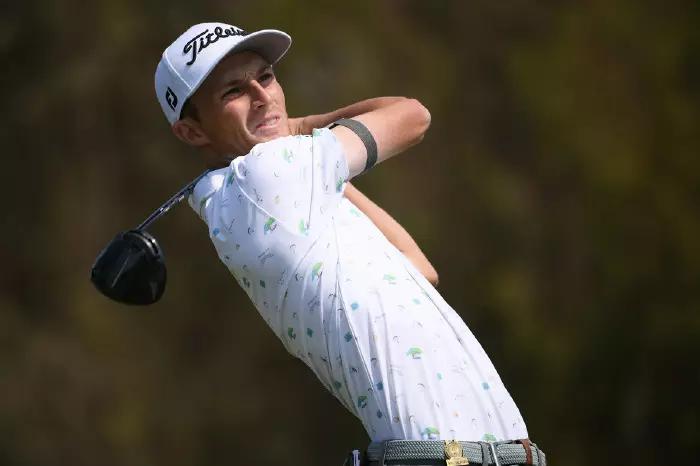The Riddle of Torrey Pines: What the players are saying ahead of the 2021 US Open

Not long now until the start of the third Major Championship of the year in San Diego, California.
Best bet
How does it compare to Winged Foot last year, which Bryson DeChambeau bullied into defeat?
The difference between Torrey Pines in January and June
Phil Mickelson: "At the Farmers, the golf course is a lot wetter and plays a lot longer. What starts to come out (this week) are the subtleties and the nuances. With the fairways being contoured the way they are and being firm now, they're going to be more difficult to hit. You've got to shape it into the fairways. And the greens are very challenging. There's a lot of pitch, a lot of contour, and as they're getting firmer. It's very difficult to get to some of the pin positions."
Gary Woodland: "It's firmer. Fairways will be a little shorter because of that, but driving the golf ball in the fairway is huge this week. If not, I'm going to try to miss in the fairway bunkers because you can at least advance it."
The challenge from the tee box
Woodland: "A lot of holes go left to right, so it sets up really good to my eye with driver. The is long so there's not many options, there's a lot of drivers. There's a couple of holes that do go right to left, but they're shorter, which allows me to hit 3-wood."
Tony Finau: "It sets up for a fade and length is a big advantage."
The rough off the fairways
Xander Schauffele: "It's sort of spotty. You can either get a really, really bad lie or not that bad of a lie, almost a flier, which is kind of tricky to judge as well. I'm no agronomist, but there's probably anywhere from three to six different kinds of grass on property, and depending on where you miss it, you can either get really lucky or really unlucky."
Some decent rough for US Open this week…I love this place! 😍 pic.twitter.com/TuMbXSRr8j
— Edoardo Molinari (@DodoMolinari) June 14, 2021
Patrick Reed: "Right now, off the fairways, I've actually found the rough okay. It's not too bad. Yes, you're going to get some bad lies here and there. Really it's more judging fliers."
Jon Rahm: "This thick blade grass that you have, you can actually get lucky and get some decent lies, or you can get some that it's hard to move five yards. So the discrepancy is big."
Lee Westwood: "I remember it being as thick off the tee (in the 2008 US Open). In fact, I think it may even be a little bit lighter this year in patches. It certainly gives you a chance. I missed the fairway on the first down the right-hand side and was surprised I had a shot. Last time I was out there, it was kind of a gouge-out shot."
Rory McIlroy: "The rough is playable. You can hit it in the rough and at least have a chance to get it up around the green. It's not as penal as some other US Opens."
The rough around the greens
Jordan Spieth: "Around the greens, it's wicked. Spotters are going to have to really be on their game because you can hit some shots five feet off the edge of the green and really have to look hard to find your ball."
Woodland: "It's brutal. I think they've mowed it a little bit since Sunday because you were losing balls around the greens. It's tough. We don't usually see rough like that. I think you're almost better short-sided because if you get too long out of that rough, it's so hard to control it. Sometimes you can just chop it out if you're short sided."
How many balls would you lose this week at the @usopengolf ? pic.twitter.com/kaaRq3FDbD
— Ian Poulter (@IanJamesPoulter) June 15, 2021
Reed: "Brutal. You have to make sure you attack and hit the greens or, worse case scenario, leave it in the bunker. I threw two balls and they landed just about the same spot. One hopped into the rough, and one of them kind of got in the kikuyu and sat up because it's so thick, actually sat high, where I felt like I could almost hit driver off of it. I've seen some guys go underneath some golf balls this week already."
Shane Lowry: "I think the rough is actually too thick. I think the rough being so thick actually takes a little bit of the skill level out of it."
Westwood: "It's going to be an extreme test. You don't want to be long on most of the holes out here."
The bunkers
Mickelson: "A typical thing of Rees Jones (who renovated the course) is every bunker around the greens goes away. Wherever the bunker is, the green is pitched away, so you really can't short side yourself because you can't get it up and down out of those bunkers that are pitched away."
The greens (and the poa annua grass on them)
Schauffele: "They're tricky. The longer the day goes on, the bumpier they get with people walking on them. Launch conditions are very important out here."
Reed: "You have to make putts early in the day because, as the days go on, the greens get a little bumpier with the poa and make everything just a little tougher."
Contrasting views on the comparison between Winged Foot and Torrey Pines
Spieth: "I think they play very differently, and here's why. At Winged Foot, the fairways were so firm that fairway percentages were going to be so low that essentially those who flew the ball the furthest (had an advantage) and, obviously, the winner was one of those. If you look down the leaderboard, regardless if you hit a good shot or not the fairways were hard to hit because of the doglegs. I think this week is different. The grass type and the fairways, even if it firms up a bit, is still going to hold shots better. And there's more bunkers around the landing areas than rough. So I think it's a different situation on that front. The greens are also smaller here. So even more emphasis on hitting fairways."
McIlroy: "Winged Foot is such a different animal to here. You had so many more openings into the greens at Winged Foot, for example, and the way those fairways were running, you could land it 30, 40 yards short and have it trundle up onto the putting surface, where here with the kikuyu grass, it's so spongy, you can't do that. It just hits and stops."
DeChambeau: "I feel like it's a little bit similar to Winged Foot, albeit the grass and the rough is a little thicker. It's a different type of grass, so you can't get through it as easily. For the most part, I'm going to be trying to bomb it as much as possible and try to gouge it out when I don't hit it in the fairway."
The US Open game plan
DeChambeau: "If I can keep hitting it to the front of the greens, two-putting when I get into trouble, I'm going to give myself a great chance this week. When I hit it in the fairway, I have to take advantage of those holes, have to take advantage of the par-5s out here. If I can do those two things, I feel like I'll have a great chance at contending."
Reed: "Just grind."
Brooks Koepka: "Focus. I enjoy when it's hard and when it matters the most."
Marc Leishman: "I think it's going to be a typical US Open, but it's going to be sort of a US Open/British Open hybrid sort of thing with how firm it's going to be."
Collin Morikawa: "I've played two US Opens, and to be honest, I think I kind of psyched myself out before I even started. That's never something you want to do."
Westwood: "Don't panic. Everybody is going to make a couple of bogeys. Try not to make a string of them and get on a run. Try not to make any double bogeys. Double bogeys are a killer at a US Open."
